BIR Revenue Regulations(RR) No. 14-00 amends certain sections of Revenue Regulations No. 13-99 to streamline and make more efficient the collection of the capital gains tax, if any, presumed to have been realized from the sale, exchange or disposition, by a natural person, of his “Principal Residence.”.
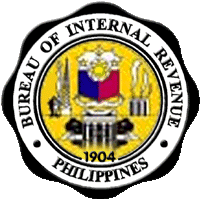
It also contains a sample Escrow Agreement, Release from Escrow Agreement, and Forfeiture of the Bank Deposit in Escrow.
The full text of BIR RR No. 14-00 follows.
November 20, 2000
REVENUE REGULATIONS NO. 14-00
SUBJECT : Amending Sections 2(2), 3 and 6 of Revenue Regulations No. 13-99 vis-a-vis Sale, Exchange or Disposition, by a Natural Person, of His “Principal Residence”
TO : All Internal Revenue Officers and Others Concerned
SECTION 1. Scope. — Pursuant to the provisions of Section 244, in relation to Section 24 (D) (2) of the National Internal Revenue Code of 1997, these regulations are hereby promulgated in order to streamline and make more efficient the collection of the capital gains tax, if any, presumed to have been realized from the sale, exchange or disposition, by a natural person, of his “Principal Residence.”
SECTION 2. Amendments. —
2.1. Section 2 (2) of Revenue Regulations No. 13-99 is hereby amended, to read as follows:
(2) Principal Residence. — (a) The term “Principal Residence” shall refer to the dwelling house, including the land on which it is situated, where the husband and wife or an unmarried individual, whether or not qualified as head of family, and members of his family reside. Actual occupancy of such principal residence shall not be considered interrupted or abandoned by reason of the individual’s temporary absence therefrom due to travel or studies or work abroad or such other similar circumstances. Such principal residence must be characterized by permanency in that it must be the dwelling house in which, whenever absent, the said individual intends to return.
(b) Where ownership of the land and the dwelling house thereon belongs to different persons, e.g., where the land is leased to the dwelling house owner, only the dwelling house shall be treated as Principal Residence of the dwelling house owner. Thus, if the said land and the dwelling house thereon be jointly sold or disposed by the said owners, only the-sale or disposition of the dwelling house shall be entitled to the benefit of exemption from the capital gains tax herein prescribed: Provided, however, that where both the owner of the land and owner of the dwelling house actually reside in the said dwelling house, then both the said land and dwelling house shall be treated as their Principal Residence (e.g., owner of the land is the parent while owner of the house is his child, or vice versa).
(c) Where the land and the dwelling house thereon be owned by several co-owners, e.g., inherited by two or more heirs through hereditary succession, and where the said property is actually used as Principal Residence by one or more of the said co-owners, including the members of his/their family, the said property shall be treated as the Principal Residence of the co-owner/s actually occupying and using the same as his/their Principal Residence but to the extent of his/their proportionate share in the value of the principal residence. Conversely, the capital gains tax exemption benefit herein prescribed shall not apply in respect of the other co-owners who do not actually use and occupy the same as their Principal Residence.
(d) The residential address shown in the latest income tax return filed by the vendor/transferor immediately preceding the date of sale of the said real property shall be treated, for purposes of these Regulations, as a conclusive presumption about his true residential address, the certification of the Barangay Chairman, or Building Administrator (in case of a condominium unit), to the contrary notwithstanding, in accordance with the doctrine of admission against interest or the principle of estoppel (e.g., if the property was sold on May 1, 2000, the vendor’s annual income tax return for the year 1999, which he filed on or before April 15, 2000, showing his residential address, shall be treated as a conclusive presumption that his true residential address is that which is shown in his aforesaid income tax return). If the vendor is exempt from filing any tax return, in which case, he has no tax record immediately prior to the sale of his property, then the aforementioned certification from the Barangay Chairman or Building Administrator, as the case may be, shall suffice.”
2.2. Section 3 of Revenue Regulations No. 13-99 is hereby amended, to read as follows:
.”SEC. 3. Conditions for Exemption. — The general provisions of the Code to the contrary notwithstanding, capital gains presumed to have been realized from the sale, exchange or disposition by a natural person of his Principal Residence shall not be imposed with six percent (6%) capital gains tax, subject to compliance with the following:
(1) Escrow Agreement. — The six percent (6%) capital gains tax otherwise due on the presumed capital gains derived from the sale, exchange or disposition of his Principal Residence shall be deposited in cash or manager’s check in interest-bearing account with an Authorized Agent Bank (AAB) under an Escrow Agreement (ANNEX A hereof) between the concerned Revenue District Officer, the Seller/Transferor and the AAB to the effect that the amount so deposited, including its interest yield, shall only be released to such Seller/Transferor upon certification by the said RDO that the proceeds of sale or disposition thereof has, in fact, been utilized in the acquisition or construction of the Seller/Transferor’s new Principal Residence within eighteen (18) calendar months from date of the said sale or disposition. The date of sale or disposition of a property refers to the date of notarization of the document evidencing the transfer of said property. In general, the term “Escrow” means “A scroll, writing or deed, delivered by the grantor, promisor or obligor into the hands of a third person, to be held by the latter until the happening of a contingency or performance of a condition, and then by him delivered to the grantee, promisee or obligee.”
(2) Capital Gains Tax Return. — The Seller/Transferor shall file, in duplicate, his Capital Gains Tax Return (BIR FORM No. 1706) covering the sale or disposition of his Principal Residence with the concerned Revenue District Office within thirty (30) days from date of its sale or disposition:
Provided, however, that the Seller/Transferor shall not be required to pay any capital gains tax during the 18-month period on the sale of his principal residence duly established as such. Provided, further, that for purposes of the capital gains tax otherwise due on the sale, exchange or disposition of the said Principal Residence, the execution of the Escrow Agreement referred to in the immediately preceding Section 3 (1) hereof shall be considered sufficient.
The following shall be submitted with the Capital Gains Tax Return herein required to be filed:
(a) Proof of payment of the documentary stamp tax imposed under Sec. 196 of the Tax Code of 1997 on the deed of sale or conveyance of the said “Principal Residence”
(b) A sworn statement from the Barangay Chairman that the taxpayer’s Principal Residence is located within the jurisdiction of that Barangay and that the same has been his residence immediately prior to the date of its sale or disposition: Provided, however, that if the taxpayer’s Principal Residence sold or disposed is a condominium unit, in lieu of the said Barangay Chairman, the certification shall be issued by the Building Administrator of the Condominium building.
(c) A duplicate original copy of the Deed of Conveyance of his Principal Residence;
(d) A certified xerox copy of the Transfer Certificate of Title (TCT) or Condominium Certificate of Title (CCT), in case of a condominium unit, covering the Principal Residence sold or disposed;
(e) A certified xerox copy of the latest Tax Declaration covering the said Principal Residence (land and improvement); and
(f) If the building or improvement thereon has been constructed on or after the year 1990, the Building Permit or Occupancy Permit issued by the concerned city or municipality, showing the amount of the construction cost thereof.
(3) Post Reporting Requirement. — The proceeds from the sale, exchange or disposition of his old Principal Residence must be fully utilized in acquiring or constructing his new Principal Residence within eighteen (18) calendar months from date of its sale, exchange or disposition. In order to show proof that positive action was undertaken to utilize the proceeds for the acquisition or construction of his new Principal Residence within the 18-month reglementary period, he shall submit to the RDO concerned, within thirty (30) days from the lapse of the said period, the following documents:
(a) A sworn statement that the total proceeds from the sale or disposition of his old Principal Residence has been actually utilized in the acquisition or construction of his new Principal Residence or, if the construction of his new Principal Residence is still in progress, a sworn statement that such amount shall be fully utilized to procure the necessary materials and pay for the cost of labor and other expenses for the construction thereof;
(b) A certified statement from his architect or engineer, or both, showing the cost of materials and labor for the construction of his new Principal Residence;
(c) A certified copy of the Building Permit issued by the Office of the Building Official of the City or Municipality where his new Principal Residence shall be constructed as well as xerox copies of documents (e.g., building specification plan, construction plans, or construction cost estimates) submitted with his application for the said Building Permit on which computation of the amount of the building license fee has been based;
(d) In case his new Principal Residence is acquired by purchase, a duplicate original copy of the Deed of Absolute Sale covering the purchase of his new Principal Residence.
(4) Release from the Escrow Agreement. — Upon a showing, based on the foregoing documents, that the proceeds of sale, exchange or disposition of his old Principal Residence have already been fully utilized in the acquisition or construction of his new Principal Residence, the concerned Revenue District Officer shall, within fifteen (15) days from date of submission by the Seller/Transferor of the foregoing documents, release the Escrow on the aforesaid bank deposit in favor of the Seller/Transferor (ANNEX B hereof).
(5) Limitation on Tax Exemption Privilege. — The tax exemption herein granted may be availed of only once every ten (10) years;
(6) Cost Basis of the New “Principal Residence”. — The historical cost or adjusted cost basis of his old Principal Residence sold, exchanged or disposed shall be carried over to the cost basis of his new Principal Residence; and
(7) Assessment for Deficiency Capital Gains Tax; Application of the Escrowed Bank Deposit Against the Deficiency Tax. — If the Seller/Transferor fails to submit documentary evidence within thirty (30) days after the lapse of the aforesaid 18-month period, showing that he has utilized the proceeds of sale, exchange or disposition of his old Principal Residence to acquire or construct his new Principal Residence, it shall be presumed that he did not, in fact, utilize the aforesaid proceeds of sale for the construction or acquisition of his new Principal Residence, in which case, he shall be treated deficient in the payment of his capital gains tax from the sale or disposition of his aforesaid Principal Residence, and shall be accordingly be assessed for deficiency capital gains tax, inclusive of the 20% interest per annum, pursuant to the provisions of Section 228 of the Code, as implemented by Revenue Regulations No. 12-99 , in relation to Section 249 of the said Code.
Pursuant to the provisions of Revenue Regulations No. 12-99, the taxpayer shall be issued with the required Post Reporting Notice informing him, in writing, of the aforementioned facts, in order that he may present his side of the case through informal conference, and the required Preliminary Assessment Notice, before issuance of the Formal Assessment Notice. If, at this point in time, the escrowed tax money is still in the custody of the Depository Bank, the full amount thereof, including its interest earnings, shall be applied in computing for the taxpayer’s deficiency capital gains tax. Upon the time that the said deficiency tax assessment has become final and executory, the deposit in escrow, inclusive of its interest earnings, shall be forfeited and applied against the taxpayer’s deficiency capital gains tax liability. The depository Bank shall forthwith be informed of this action, and shall, upon demand in writing, by the Commissioner or his duly authorized representative (ANNEX C hereof), turn over the money for application in payment of the taxpayer’s deficiency tax liability. If the same is insufficient to cover the entire amount assessed, the seller/transferor shall remain liable for the remaining balance of the assessment. On the other hand, the excess of the deposit in escrow, if any, shall forthwith be returned to the Seller/Transferor, by the Bank, upon written authorization from the Commissioner or his duly authorized representative.
(8) Partial Utilization of the Proceeds of Sales Exchange or Disposition. — If there is no full utilization of the proceeds of sale, exchange or disposition of his old Principal Residence for the acquisition or construction of his new Principal Residence, he shall be liable for deficiency capital gains tax, inclusive of 20% interest per annum, computed from the 31st day after the date of sale or disposition of the said old Principal Residence.”
2.3. Section 6 of Revenue Regulations No. 13-99 is hereby amended, to read as follows:
“SEC 6. Issuance of Certificate Authorizing Registration (CAR) or Tax Clearance Certificate (TCL). — The seller/transferor’s compliance with the preliminary conditions for exemption under Sec. 3(1) and (2) of these Regulations shall be sufficient basis for the RDO to approve and issue the CAR or TCL of the principal residence sold, exchanged or disposed by the aforesaid taxpayer. Said CAR or TCL shall state that the said sale; exchange or disposition of the taxpayer’s principal residence is exempt from capital gains tax pursuant to Sec. 24 (D)(2) of the Code but subject to compliance with the post-reporting requirements imposed under Sec. 3(3) of these Regulations.
SECTION 3. Penalty Clause. — (1) Any Barangay Chairman, or Building Administrator, as the case may be, who shall falsely certify that the property sold or disposed is the vendor/transferor’s Principal Residence when, in truth and in fact, it is not, shall be punished under the penalty of perjury, at the discretion of the Court.
(2) Any other violation of the provisions of these Regulations shall, upon conviction for each act or omission, be punishable under Section 275 of the Code by a fine of not more than One Thousand Pesos (P1,000.00) or imprisonment of not more than six (6) months, or both, at the discretion of the Court.
SECTION 4. Repealing Clause. — Any revenue issuance, if inconsistent herewith, shall be considered revoked, amended, or modified accordingly.
SECTION 5. Effectivity Clause. — These Regulations shall take effect fifteen (15) days after its publication in any newspaper of general circulation.
(SGD.) JOSE T. PARDO
Secretary of Finance
Recommending Approval:
(SGD.) DAKILA B. FONACIER
Commissioner of Internal Revenue
ANNEX “A”
Republic of the Philippines
Department of Finance
BUREAU OF INTERNAL REVENUE
Revenue Region No. _____
RDO No. _______
ESCROW AGREEMENT
The Bureau of Internal Revenue, herein represented by _____________, Revenue District Officer, RDO No. _____, ______; the Seller/Transferor _______________ with postal address at _________________; and the Authorized Agent Bank (AAB), _________________ with office address at _____________________ herein represented by _____________________, in his capacity as _______________, hereby agree:
That, the sum of _____________ (P______), representing six percent (6%) of the selling price or fair market value, whichever is higher, of the Seller/Transferor’s “Principal Residence,” which he sold/disposed on _____________, shall be deposited with the above-mentioned AAB on or before , 200_;
That, the said amount shall be placed in an interest bearing bank deposit account under the account name of the taxpayer in trust for the Bureau of Internal Revenue:
Provided, however, that this account may be readily withdrawn at any time, upon presentation of “Release from Escrow Agreement” signed by the CIR or his authorized representative or the concerned Revenue District Office (RDO) when the proceeds of sale/disposition has been utilized in the acquisition or construction of a new principal residence within 18 months from the date of sale or disposition of the old principal residence: Provided, further, that the AAB shall, at any time, upon written request of theRDO, furnish the latter with information on the amount of interests earned by the said bank deposit in escrow;
That, no part of the said bank deposit may be withdrawn, delivered and paid to any person except upon express and written order from the said Revenue District Office.
DONE THIS ________ DAY OF _________, IN THE YEAR OF OUR LORD, 200___.
The Parties have signed this Agreement subject to the penalties of Perjury.
Commissioner of Internal Revenue
By:
_____________________________
Name and Signature of the Revenue
District Officer, RDO NO. ________
_______________________________
Name and Signature of Seller/Transferor
_____________________________
Name of the AAB, Name and Signature of the AAB’s Duly Authorized Representative
ANNEX “B”
Revenue District No. ____
Revenue Region No. 7
Quezon City
RELEASE FROM ESCROW AGREEMENT
To : (State name and address of the AAB)
Subject : ( State name of the taxpayer)
Date : __________________
This refers to the sum of ___________________ (P__________) which was deposited with your Bank under our Escrow Agreement, representing six percent (6%) of the selling price or the fair market value, whichever is higher, of the “Principal Residence” which was sold by Mr./Ms. ____________________ on _______________, 200_, a copy of which Agreement is attached herewith for your ready reference.
In accordance with our agreement, you are now hereby directed to turn over, deliver and pay to the aforementioned Mr./Ms. ______________, the entire amount of the aforesaid deposit in escrow, including its interest yield, considering that all the conditions for the release of the deposit in escrow have already been fully complied with by the said Seller/Transferor.
Very truly yours,
Commissioner of Internal Revenue
By:
________________________
Name and signature of RDO
ANNEX “C”
Revenue District No. _____
Revenue Region No. 7
Quezon City
FORFEITURE OF THE BANK DEPOSIT IN ESCROW
To : (State name and address of the AAB)
Subject : ( State name of taxpayer)
Date : __________________
This refers to the sum of ___________________ (P____________) which was deposited with your Bank under our Escrow Agreement, dated _________, 200_, representing six percent (6%) of the selling price or the fair market value, whichever is higher, of the “Principal Residence,” which was sold by Mr./Ms. _______________, on _______________, a copy of which Agreement is attached herewith for your ready reference.
[INSTRUCTION. — The RDO shall state under this paragraph (1) whether only a partial portion thereof may be so delivered are paid to the Seller/Transferor, with the balance to be applied in payment of the Seller/Transferor’s capital gains tax, due to non-utilization, in full, of the proceeds of sale of his “Principal Residence”; or (2) whether the entire escrowed deposit, including interest yield thereof, shall be forfeited in favor of the Government and applied against the taxpayer’s capital gains tax, due to non-utilization of the entire proceeds thereof in the acquisition or construction of the taxpayer’s new “Principal Residence.” If any portion thereof is forfeited in favor of the Government, the RDO shall prepare Authority to Accept Payment or Payment Order, addressed to the said AAB, directing that such amount be receipted in the name of the taxpayer in payment of his capital gains tax. The taxpayer’s copy of the official receipt shall be sent to the taxpayer, by mail or personal delivery]Very truly yours,
Commissioner of Internal Revenue:
By:
___________________________
Name and signature of the RDO

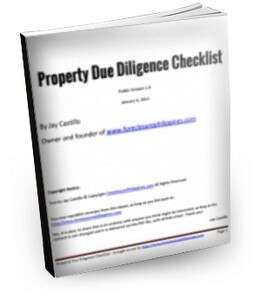
![Pag-IBIG Foreclosed Properties (April 2025) Online Public Auction/ Negotiated Sale Listings [Part 4] 2 pag-ibig acquired assets for sale 2025](https://www.foreclosurephilippines.com/wp-content/uploads/2022/05/pag-ibig-acquired-assets-2022-728x410.jpg)
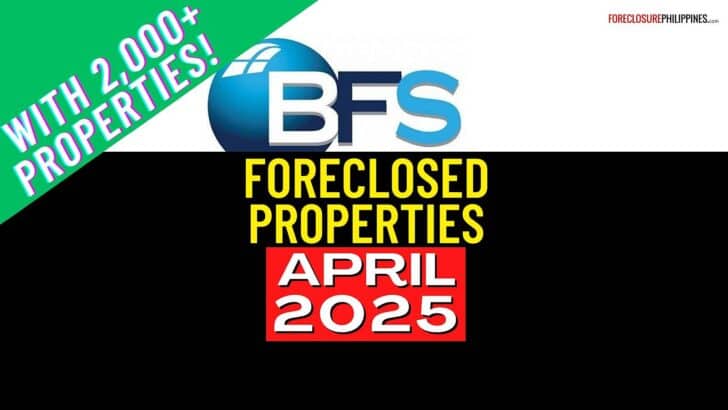

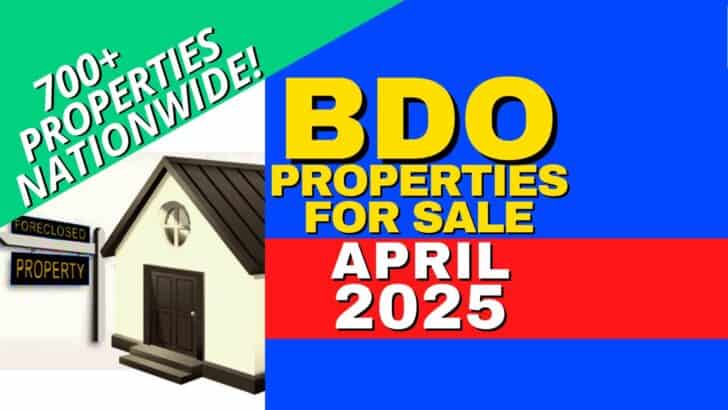
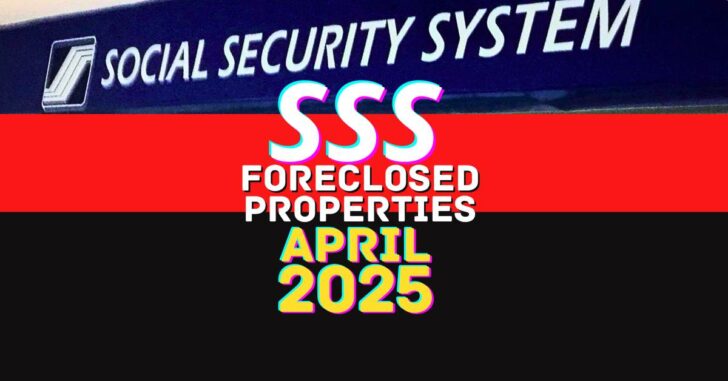

Atty. Cherry, I bought a house last June to transfer residence. I was able to sell my former principal residence last week only. Can I still apply for exemption for CGT for the recent sale of my principal residence considering I bought and transferred to my new principal residence last June only? Thank you for any advice you can give.
Hi Cherry. To open the Escrow, the who will be the holders of the Bank account? Does BPI do this?
Whose name should be on the MC of the Cap Gains? Still BIR or Seller?
hi Ms. Cherry! I hope you could help me with my query:
It is indicated that the seller/owner can be exempted from the capital gains tax if the property to be sold is considered the Principal Residence, and that the gains from sale of the property should be used to buy/construct a new house that will become the new Principal Residence of the seller. is my understanding correct?
If yes, can the seller/ owner still be exempted from CGT is the property that they’ll be buying is not in the Phils, i.e. in Canada?
I’ll be waiting for your response/advice. Thank you and have a nice day =)
Pingback: Article Links on BIR Revenue Regulations No. 13-99 And No.14-00 on Sale Of A Principal Residence | City of Taguig Real Estate Board
Pingback: How To Get Capital Gains Tax Exemption On The Sale Of Your Principal Residence